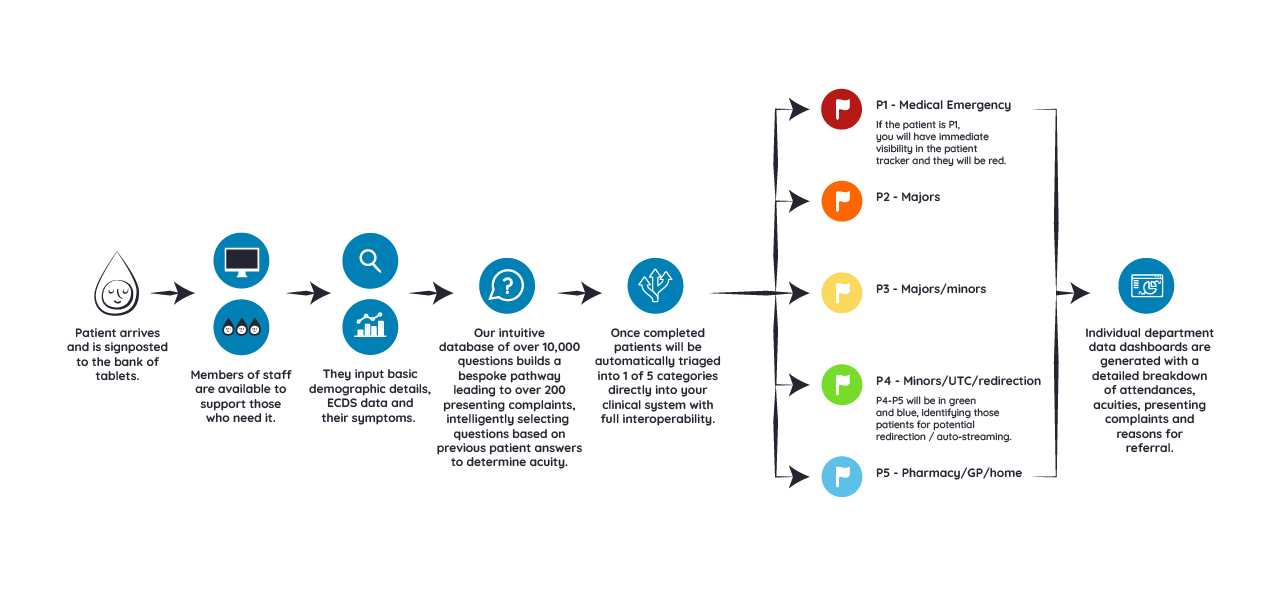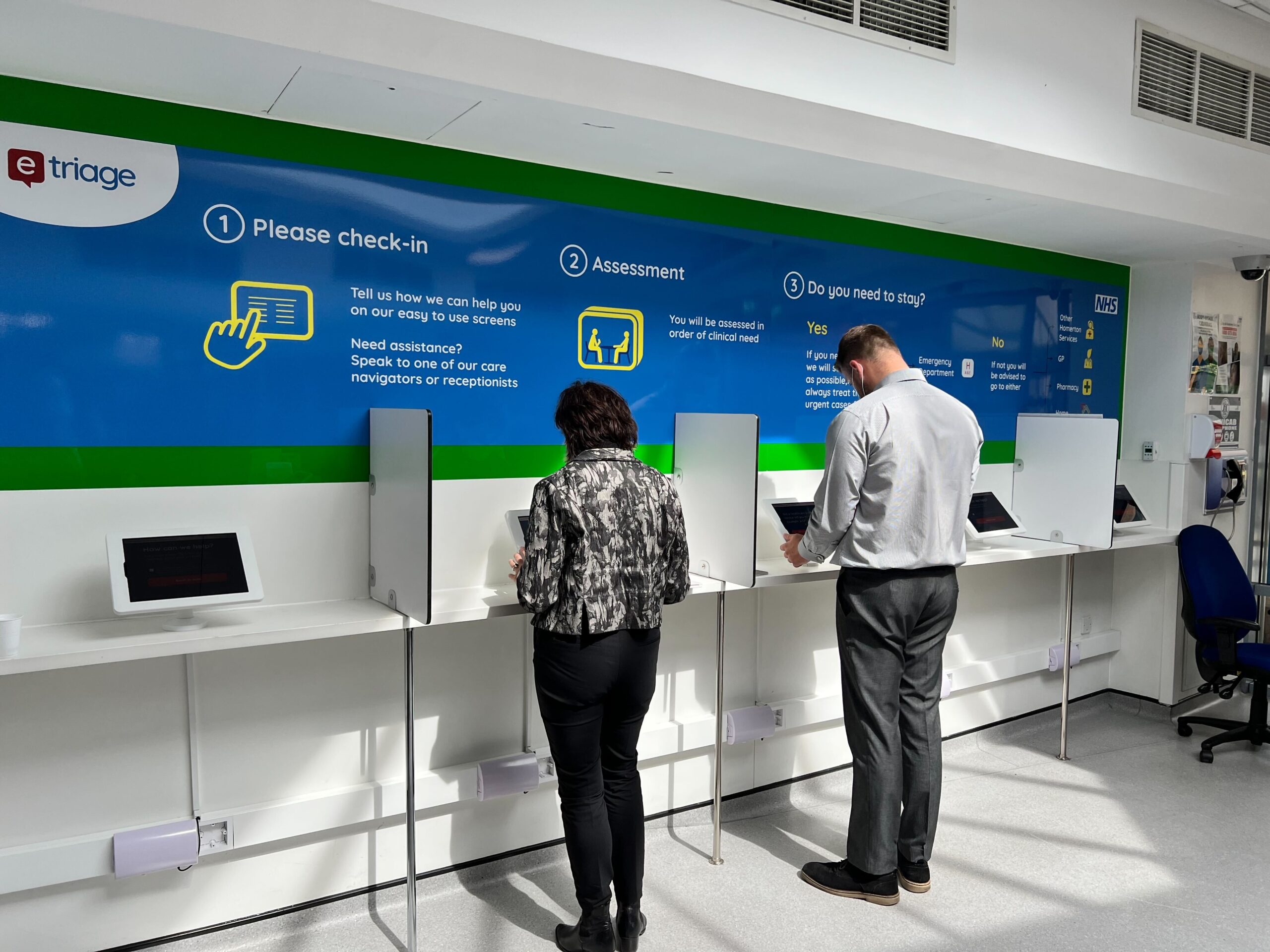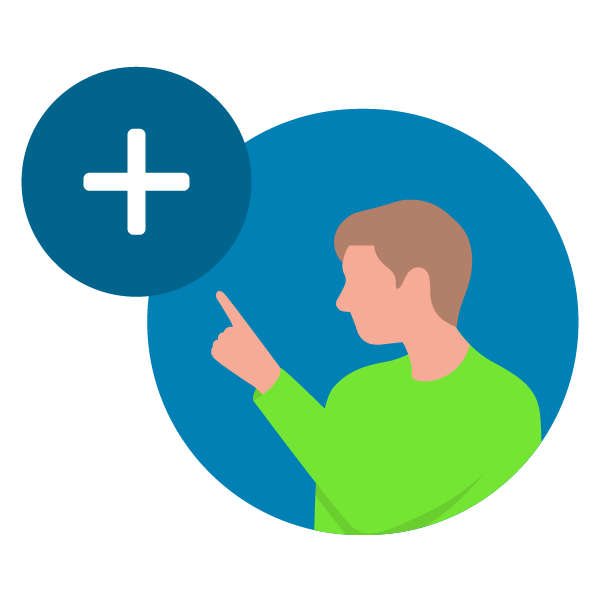How eTriage would work in your hospital

What difference does eTriage make?
Before eTriage, patients would check-in to the department with a receptionist. They would sit down and wait, have their history taken by a triage nurse and then wait again, before being assessed.
Now, history take and check-in are carried out by patients on arrival, thanks to a bank of tablets with the clinically developed eTriage software.
As the available number of tablets is matched to your hospital’s peak demand, patients should have no wait to check-in.

-
The patient completes an eTriage in the waiting room
- An Emergency Department patient arrives and enters their demographics and history into the eTriage tablets.
- The patient’s details are automatically cross-checked with the Mini-spine and their NHS number. Over 90% of patients are matched automatically.
- Patient’s are asked simple, easy to read questions that react in real-time to take an accurate and safe clinical history.
- It takes 3-4 minutes to complete an eTriage, which safely reduces A&E waiting times.
-
The patient’s symptoms are automatically triaged
- The clinical history provided by the patient is auto-triaged into the hospital clinical system.
- eTriage will auto-triage patients aligning to the Manchester Triage System so that it is easy to know which patients should be treated first.
- If a patient flags as a medical emergency your staff are alerted immediately to take action.
Get in touch
Sound good?
Find out more about features and pricing.
If you are a patient and want to contact your own NHS GP, online with eConsult click here to start.

